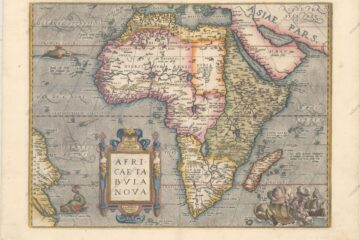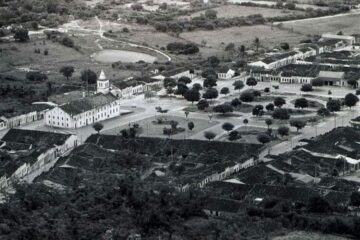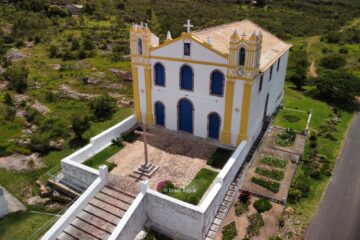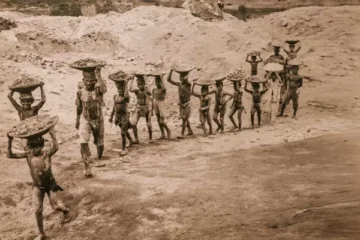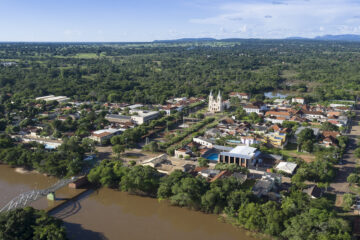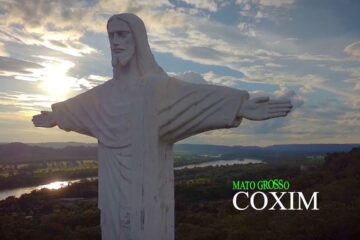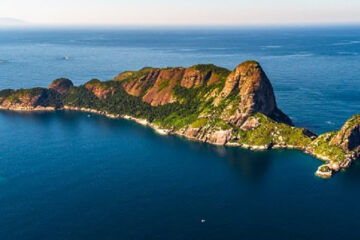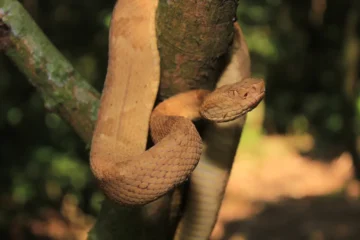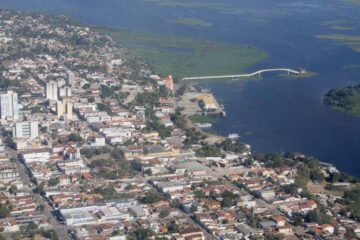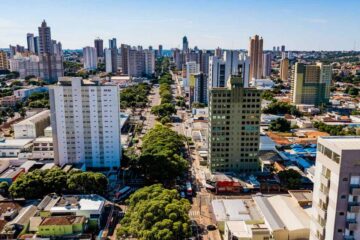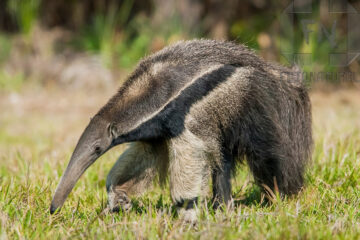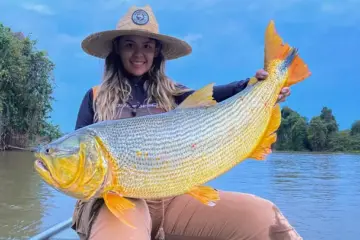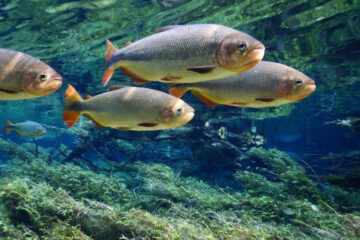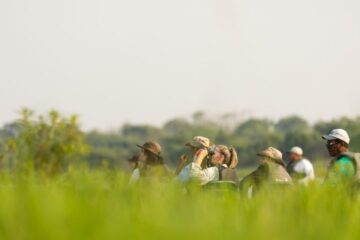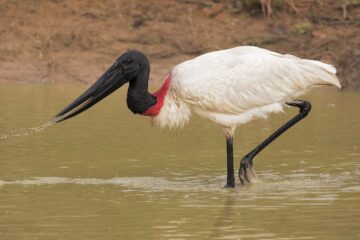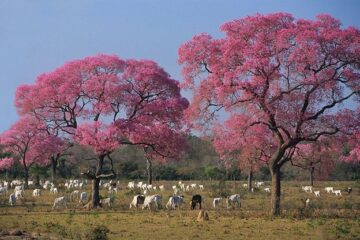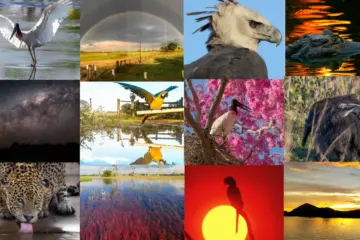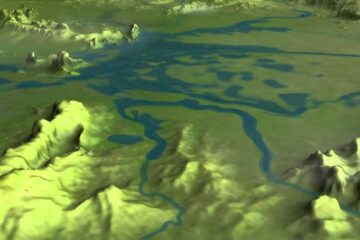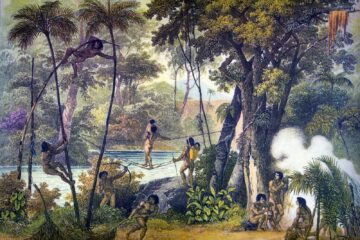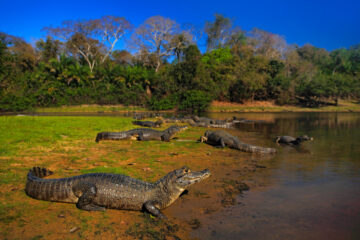Este post também está disponível em:
Português
English
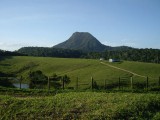
Monte Pascoal National Park is located in the southernmost part of Bahia, between the cities of Porto Seguro and Prado, and covers 22383 ha.
Its natural area presents a great diversity of landscapes and unique scenic beauties, such as the beach of Aldeia de Barra Velha with crystalline waters and preserved restinga vegetation, the mangrove, the restinga forests and the pluvial beaches of Rio Caraíva and Corumbau and the Mussununga fields.
Mount Pascoal, with its summit at 356 m altitude that guarantees a 360º view of the region, and a charming area of Atlantic Forest, more specifically the forest called Ombrofila Densa, with its trees up to 40 m high with evergreen leaves and a humid climate.
With each kilometer traveled, Monte Pascoal becomes more imposing and we begin to imagine what it was like to see in the distance the first portion of land of a continent still strange in the discovery of Brazil.
Already in the ordinance it is possible to observe that this park goes through a moment of transition by which the Indians, of Pataxó ethnicity, practically occupied all the limits of the unit, claiming the ownership of these lands once occupied by their ancestors.
There is a process underway in Brasilia that, according to the director of the unit, will possibly give possession of this area to the Indians, thus losing the title of Monte National Park, by the way one of the oldest in Brazil, created in 1961.
See the map Costa do Descobrimento
There are about 13 villages inside the Monte Pascoal National Park, some with electricity, others with generators and also some in the dark.
The largest of them, the Village of Barra Velha, has a good structure, with school, computers, leisure area and other facilities.
Videos “Monte Pascoal National Park” and “Pataxó Indians”
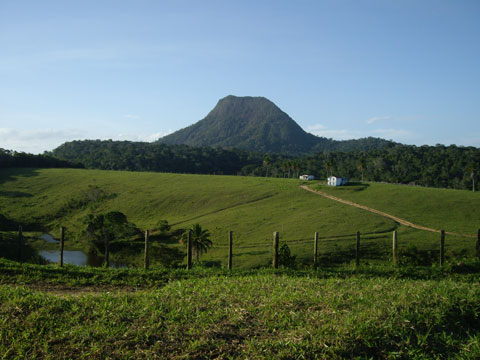

Parque Nacional Monte Pascoal
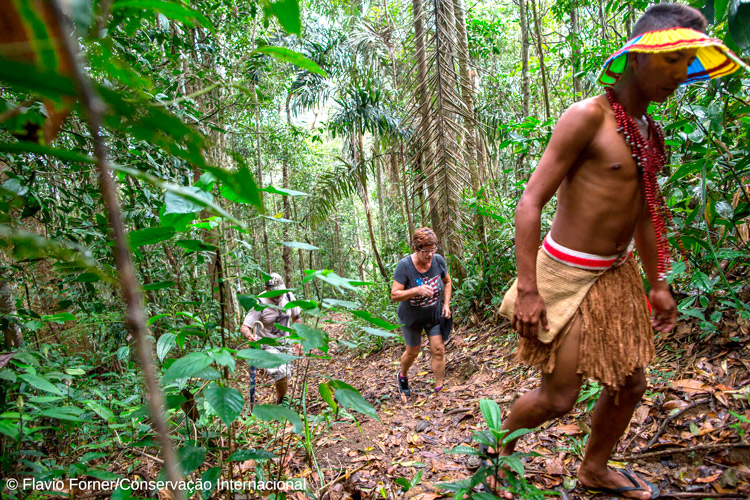
Parque Nacional Histórico Monte Pascoal
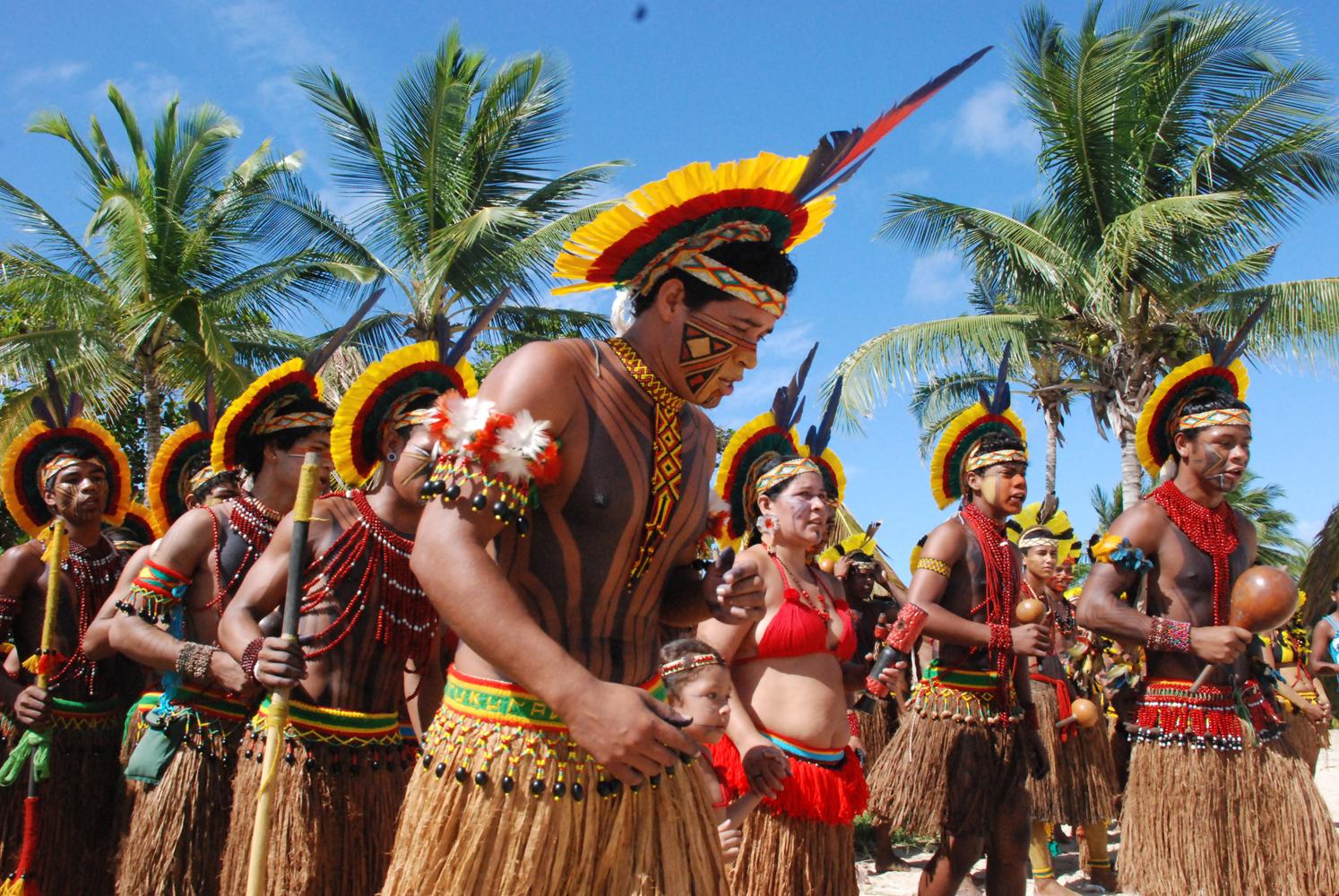
Índios Pataxós e a terra do descobrimento
Indigenous Community at Monte Pascoal National Park
The Tupinambás Indians already occupied these lands long before the Portuguese colonization, but in the 16th century who started to occupy the region was the Pataxó community, which is there until today.
Surviving mainly from the park’s visitation activities, subsistence agriculture (manioc, cassava, banana, jackfruit) and the raising of free-range chickens, it is these indigenous people who take care of the tourism operation in the Monte Pascoal National and Historical Park, thanks to the community’s involvement in community-based ecotourism developed in partnership with the Federal Government.
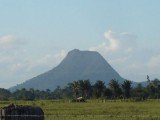
Currently, Ibama has established a partnership with the Indians, which has brought benefits to the unit, such as firefighting, carried out by a PrevFogo team formed only by Indians.
I accompanied one of these fights, recorded the images and, after a few hours in the middle of an immense fire, I was gray, with all the clothes and equipment full of soot and I saw on my skin this hard work that is carried out in almost all parks in Brazil.
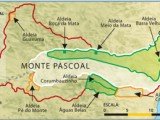
On the other hand, the exaggerated exploitation in the Monte Pascoal National Park and the uncontrolled harvesting of lumber by the Indians for handicrafts must be reviewed so that they do not cause irreversible damage to this region.
Handicrafts are the only source of income and ensure the survival of many Indians living in the villages, so measures are needed to ensure the sustainability and preservation of these ecosystems found at the time of discovery.
Get to know the history of the Pataxó Indians
Originally from the Barra Velha Village (known as Mother Village), indigenous area of Monte Pascoal, and distributed in several villages in several municipalities (Prado, Itamaraju, Santa Cruz Cabrália and Porto Seguro), the Pataxó people have always been warriors.
Since the time of the Portuguese invasion, around 1500, they have fought to establish themselves in a place and preserve history, culture and language, customs and traditions that have been lost since the Pataxós were joined to Maxacalis and Botocurus tribes in a village from which they could not leave.”In 1861, the peoples were forcibly settled in Bom Jardim, now Barra Velha Reserve, which is close to Monte Pascoal.
Then there was a great massacre and many Indians fled to avoid being killed,” says the Indian Nitynawã Pataxó, chief of her tribe. Known by the older Indians (who prefer not to talk about it) as “Fire of 51”, the massacre took place in 1951, in the village of Barra Velha.
According to the history of the tribe, told by the Indian Edmundo Santos Pataxó in a text available on the website of the Municipality of Porto Seguro, the city where the largest concentration of Pataxós in southern Bahia is located, it was caused by military police from the state.
Girls were raped and men were beaten, and many had to submit to slavery because they had run out of options. Eight years earlier, the government had created the Monte Pascoal National Monument Park and expelled the Indians who lived there.
This was the beginning of the dispersion of the Pataxós into small villages. “Many decided to stay in the forest and try to preserve their culture. My relatives are some of them. We have many games and rituals, the Full Moon, marriage, baptism… We are now trying to recover the Patxohã language.
We have already catalogued more than two thousand words and put together a dictionary, but it is within the community because we need the elders to approve the research,” says Nitynawã.
As well as the rituals of singing and dancing (Awê is the most famous), painting and plant-based medicine (roots, vines, leaves, seeds, bark, resins, etc.), the preservation of the language is one of the works that Nitynawã carries out alongside her sisters Jandaya and Nayara in the bilingual school set up in the Jaqueira Reserve.
In the same year that the Jaqueira Reserve was founded, in 1998, the Coroa Vermelha Indigenous Land, located in the south of the State of Bahia, was homologated.
It comprises an area of 1,493 hectares in the municipalities of Santa Cruz de Cabrália and Porto Seguro and is reserved for the enjoyment of about one Pataxó population. In this same area, tourism has also become an alternative for the economy of the people, who already had fishing, handicrafts and piassava management as activities:
“To be able to live and to be able to preserve the forest and the peoples, we need to open to outsiders and do tourism since 2000. Agriculture is more for consumption, and we have not killed animals for a long time. Today, we have jaguars and ocelots here. We work on this awareness because otherwise we would soon have no more animals.”
Tourist spots in Monte National Park
The attractions of the Monte National Park are basically concentrated around the gatehouse, where visitors are allowed access.
It is mandatory to make the ascent to Monte Pascoal, of course a minimum physical conditioning is required, because the final stretch is steep and requires a lot.
Already at the top, there are many observation points, with views of the sea, the neighboring hills, dense forest, stupendous views that will be worth every meter climbed.
If you’re lucky, you might see the beautiful aerial ballet of king vultures circling the hill in search of thermals, providing a beautiful spectacle from the heights.
Back at the base of Mount Pascoal, walking along trails in the middle of the closed forest, accompanied by an Indian guide, you may even spot some typical animal of this region, but it will be very rare because, with the action of hunters and even the Indians who survived these forests, the animals are risky and very scarce.
There are records of several species of local fauna but, particularly, even walking at different times, I did not observe any of them. What will be easy to see are the huge large trees like the jequitibá, the jacarandá da Bahia, the pequi, the paraju and the joerana, the smaller trees are everywhere.
The visitor center, despite being a little abandoned, is worth a visit, it is located right at the foot of the hill and some Indians show their work there.
Knowing the unit a little more deeply, I could see a sad reality, some Indians live in poverty and others with alcohol problems.
We hope that FUNAI and FUNASA will be more active in this region and try to help these people for a better quality of life, providing food security and income alternatives for these communities.
Access to the unit is via BR-101, after traveling 76 km from the city of Eunápolis, or 16 km from Itamaraju. At the small interchange, turn right and drive another 14 km on asphalt to the gatehouse.
Even if Monte Pascoal ceases to be a National Park administered by IBAMA, we hope that the Indians who live in the region will be aware of the fragility of these ecosystems inserted in the last stretches of Atlantic Forest of southern Bahia, and promote the recovery and preservation of this area, not only for its historical importance, but also to ensure the future and livelihood of future generations.
Bahia.ws is the largest tourism and travel guide for Bahia and Salvador.
